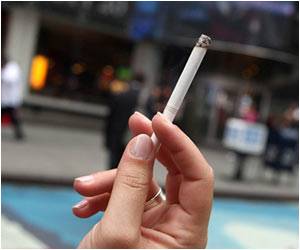Plain packaging of tobacco products must be part of the 'new normal' during and post COVID-19 pandemic, worldwide - without any further delay.

‘Plain packaging of tobacco products must be part of the 'new normal' during and post COVID-19 pandemic, worldwide - without any further delay. Every life matters.’





More worrying is the emerging scientific evidence that diseases of which tobacco is a common major risk factor, are dangerously elevating the risk of serious outcomes of COVID-19 (including death). One glimmer of hope in these difficult times, of public health emergency and cascading humanitarian and economic crisis, comes from Singapore: plain packaging of all tobacco products comes into immediate effect from 1st July 2020.Plain packaging punctures deception tactics
According to the World Health Organization (WHO) and the global tobacco treaty (WHO Framework Convention on Tobacco Control), plain packaging means restricting or prohibiting the use of logos, colours, brand images or promotional information on packaging other than brand names and product names displayed in a standard colour and font style.
It also implies use of black and white or two other contrasting colours, as prescribed by national authorities; nothing other than a brand name, a product name and/or manufacturer's name, contact details and the quantity of product in the packaging, without any logos or other features apart from health warnings, tax stamps and other government-mandated information or markings; and standardized shape, size and materials. No advertising or promotion inside or attached to the package or on individual cigarettes or other tobacco products is allowed.
It is common knowledge how tobacco industry has used deception, lies and misleading branding, marketing, sponsorship, advertising and promotion (despite ban on advertising) to hook new children and young people into addiction so that its cash registers keep ringing (while millions keep dying from its products every year). Plain packaging transfers much more power to the government to control a deadly product, punctures the deception and lies of industry age-old tactics, and helps save lives and avoid unnecessary human suffering.
Advertisement
Plain packaging serves several purposes, including reducing the attractiveness of tobacco products; eliminating the effects of tobacco packaging as a form of advertising and promotion; addressing package design techniques that may suggest that some products are less harmful than others; and increasing the noticeability and effectiveness of health warnings.
Advertisement
Plain packaging reduces the attractiveness and appeal of tobacco products to consumers, increases the noticeability and effectiveness of health warnings, and reduces the ability of the tobacco product and its packaging to mislead consumers about the harms of smoking."
Mayor Bima Arya of Bogor City, Indonesia, who is also Co-chair of the Asia Pacific Cities Alliance for Tobacco Control and NCDs Prevention (APCAT), congratulated Singapore on this proactive step to save lives from tobacco-related diseases, for its leadership in the region, and for its commitment to becoming a tobacco-free country.
According to data from the Singapore Ministry of Health, smoking prevalence in 2019 was 10.6 percent. Although this number is relatively low compared with other countries in the region, smoking is the country’s second highest contributor to diseases such as heart attacks, stroke, cancer and chronic obstructive pulmonary disease, and killed an estimated 2,073 people in 2016. Furthermore, smoking directly costs Singapore at least US $600 million a year in healthcare costs and lost productivity.
From 1 July 2020, non-compliance with the plain packaging (or standardized packaging) regulations in Singapore will be an offence punishable with a fine not exceeding $10,000, imprisonment for a term of up to six months, or both for first offenders.
Those with a prior qualifying conviction will face heavier penalties. The range of other tobacco control measures include public education, taxation, smoking cessation programmes, bans on tobacco advertising, the point-of-sale display ban and the institution of a minimum legal age for tobacco has already been in force in Singapore.
COVID-19 pandemic has undeniably brought home the realization why walking the talk on "Health For All" is central to social, economic and health security “where no one is left behind”, said Shobha Shukla, founding Managing Editor of CNS (Citizen News Service).
One of the low-hanging public health measures for the governments is to advance strongest possible implementation of life-saving tobacco control policies worldwide: every tobacco-related disease is preventable and untimely deaths could have been averted.
One of such public health imperative is plain packaging. Singapore joins two more nations in Asia Pacific that have enforced plain packaging earlier: Australia (2012) and Thailand (2019). Hope all remaining governments in Asia Pacific region, and globally, will accelerate progress on strong life-saving tobacco control measures.
Source-Medindia












